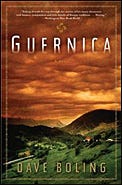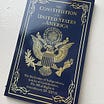Guernica, the Spanish town cherished by many as “the cradle of the Basque race” and immortalized by Pablo Picasso’s mural depicting its 1937 bombing, is brutally and brilliantly resurrected in this debut novel. Briefly sketching the half century before the main events, it captures the Basque spirit of northwest Spain through the lives of two linked families, one in Guernica, another in Lekeitio.
Justo Ansotegui is the head of his family and of his family’s rural homestead near Guernica. One of his brothers becomes a fisherman in the village of Lekeitio, a livelihood which for self-respecting Basques is intrinsically connected with the smuggling trade. Another becomes a priest who develops close ties to José Antonio Aguirre, the first president-in-exile of the Basque people.
While Fascist rebel Francisco Franco seeks to crush the Basque nation during the Spanish Civil War, the Basques resolve to survive. They know their “language always has been the most important act of separation.” Children understand that the warning “Watch your language” means to avoid speaking Basque among the wider public. With gleeful stealth, the cheerful Ansotegui family revels in tending their astokilos (donkeys), dancing their jotas, and honoring the village amumas (grandmothers).
On the fateful day of April 26, 1937, Miren Ansotegui Navarro is in the marketplace of Guernica with her baby daughter and her mother. Her husband Miguel is working outside of town. Justo is working his land. The Germans decide Guernica will be the Luftwaffe’s target that day, its obliteration the goal. The novel has drawn us so far into the lives of Guernica’s people that it's almost impossibly painful to read about the bombing.
In the aftermath of destruction, Guernica rises from the ashes. Survivors continue to rebel. The Ansoteguis and Navarros smuggle Jews and stranded RAF pilots out of Nazi Europe as they help restore the broken heart of the Basques. Guernica is a marvel of perfect pacing and agonizing beauty. (2008; 367 pages, including an Author’s Note separating fact from fiction and an Acknowledgement with additional facts and a bibliography)





